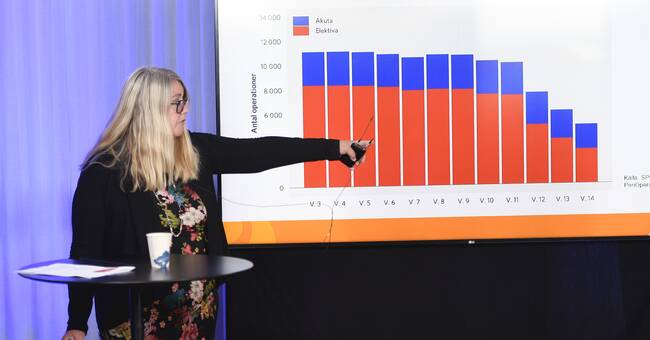In recent years, the economy has faltered in many of the country's municipalities and regions.
Many have gone with negative results and been forced to save on operations.
Now it has turned around, and with a message.
In total, municipalities and regions received a surplus of 54.6 billion last year.
If you only look at the operating result, the surplus was 51.5 billion.
This is shown by preliminary figures from Statistics Sweden.
Surplus of 51 billion
In total, municipalities and regions received a surplus of 54.6 billion last year.
If you only look at the operating result, the surplus was 51.5 billion.
This is shown by preliminary figures from Statistics Sweden.
The main reason is that government subsidies and equalization increased by SEK 40.6 billion from the previous year.
The majority are state aid linked to the pandemic.
- The absolute highest result ever, says Annika Wallenskog, chief economist at SKR.
Lower costs
Sweden's municipalities and regions, SKR, also believe that the surpluses are largely a result of state support during the corona pandemic.
Annika Wallenskog points out that they have had lower costs in many areas.
Demand for non-covid-19 healthcare has been lower than normal, especially in the spring of 2020. Many municipalities have had lower costs for travel, childcare and care for the elderly.
- The state has covered the additional costs for covid-19.
We estimate that about 5 percent fewer have lived in nursing homes than normal and 3.5 percent less home care has been provided.
However, the picture is very fragmented in the country.
In some municipalities, the costs for elderly care have been higher than normal, says Annika Wallenskog.
A one-time effect
According to SKR, however, this is supposed to be about one-off effects.
Going forward, it is believed that both municipalities and regions need to continue to restructure their operations to manage the economy.
- It is important that the strong result does not mean that the municipalities lose their long-term financial focus due to this.
Now they have the opportunity to change in the slightly longer term and may not need to notify and lay off staff but can change work as employees retire, says Annika Wallenskog.
- For the long-term challenge remains, even if the state pours money over the sector in 2020 and "demand for welfare" has been lower.
So it is important that the municipalities continue the work of reducing administrations, removing unnecessary costs and tasks, continue the digitization work and continue to think long-term.

